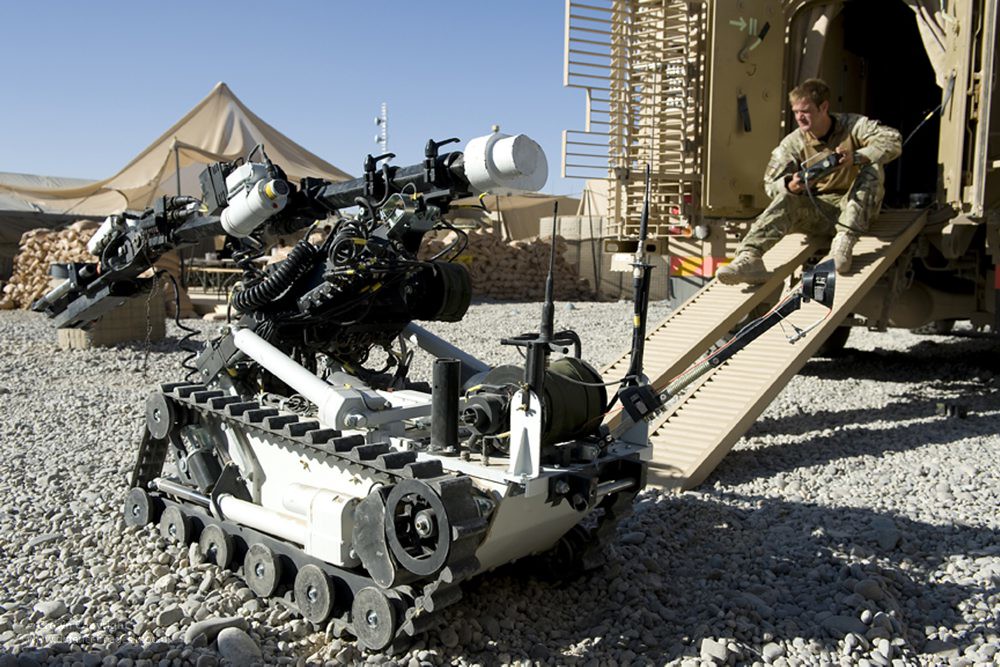
Recent developments within the defense sector indicate a notable escalation in the interest surrounding an Estonian-produced unmanned ground vehicle, known as THeMIS, currently in deployment within Ukraine. Ground-based robotic assets are increasingly coveted assets in modern warfare.
Last year, the Moscow-based Center for Analysis of Strategies and Technologies [CAST] announced a reward of one million rubles, approximately $11,000, for any military personnel capable of securing a THeMIS vehicle in relatively undamaged condition. Manufactured by Milrem Robotics, a subsidiary of the Edge Group, the THeMIS vehicle garnered significant attention.
The situation intensified on February 15, when CAST Director Ruslan Pukhov revealed to the state-owned news agency, RIA Novosti, that the reward had been doubled to two million rubles, or about $22,000. Pukhov justified the sudden increase in response to allegations from Estonian intelligence linking the think tank to Russian intelligence services.
Pukhov’s actions have come under scrutiny following a report by the Baltic nation’s foreign intelligence service, which accuses Russia’s Federal Security Service [FSB] of targeting academics and personnel from think tanks engaged with foreign embassies for recruitment efforts. Pukhov is implicated as a key figure in this alleged strategy, purportedly with ties to both Russia’s political hierarchy and the Ministry of Defence.
In January, Milrem disclosed the delivery of 15 THeMIS unmanned vehicles to Ukrainian forces, as stated on the 11th of that month. Notably, feedback from Ukrainian soldiers indicates these unmanned vehicles have made significant contributions in demining and frontline cargo transport operations.
The notion that all publicity is good publicity holds true even amidst the Russian bounty on their THeMIS vehicles, as Milrem executives exhibit a nonchalant attitude towards potential tech theft.
Gert Hankewitz, Milrem’s Director of Communications, exudes confidence as he humorously remarked on LinkedIn, “Looks like I might as well take another day off this week since CAST has taken it upon themselves to do my job and upped their bounty for snagging a THeMIS in Ukraine to 2 million rubles. Free promotional work, anyone?”
Expressing optimism, Hankewitz affirmed the company’s trust in the Ukrainian army’s ability to safeguard the THeMIS UGVs against any threats and to utilize them to their fullest potential.
The situation underscores the widespread allure of war robots in the Ukraine conflict, with analysts noting soldiers’ growing preference for employing robots in high-risk operations due to their real-time monitoring capabilities, facilitating swift responses to troop and vehicle movements.
While certain ground robots, such as the THeMIS, showcase advanced functionalities, others with simpler designs excel in logistical roles. Despite Russia’s keen interest in THeMIS technology, Milrem remains prepared to deploy additional units as needed. Hankewitz affirmed, “Should Ukraine require more systems, we are poised to deliver promptly.”
Regarding the THeMIS (Tracked Hybrid Modular Infantry System), it stands as a ground-based unmanned combat vehicle engineered by Milrem Robotics, an Estonian firm. This vehicle’s primary purpose encompasses bolstering military operations, offering capabilities in reconnaissance, surveillance, and target acquisition, alongside functions such as supply transport, medevac, and explosive ordnance disposal.
THeMIS boasts a modular design that facilitates the integration of diverse mission-specific payloads. This versatility enables equipping the robot with various systems, including remote weapon stations, surveillance and CBRN (Chemical, Biological, Radiological, Nuclear) reconnaissance equipment, tethered drones, and IED detection devices, among others. Such adaptability ensures THeMIS’ effectiveness across a broad spectrum of battlefield scenarios.
Impressively, THeMIS demonstrates considerable operational prowess, capable of operating for up to 10 hours on a single charge and covering approximately 30 km depending on mission requirements. With a top speed of 22 km/h on roads and 10 km/h off-road, the vehicle can be remotely controlled from distances of up to 2 km in urban environments and up to 10 km in open terrain.
Propulsion for THeMIS is facilitated by a hybrid diesel-electric drive system, offering both endurance and silent operation capabilities when needed. This mechanism involves the diesel generator charging batteries, which in turn power electric motors for movement. Additionally, the hybrid system aids in reducing thermal and acoustic signatures, thereby enhancing the vehicle’s stealth capabilities.
In terms of specifications, THeMIS measures 2.4 meters in length, 1.3 meters in height, and 2 meters in width, with a maximum payload capacity of 1200 kg. Impressively, the vehicle can navigate various terrains including sand, snow, and water up to a depth of 60 cm, and traverse slopes with inclinations of up to 30 degrees. Its robust design ensures resilience and reliability even in harsh environmental conditions, solidifying THeMIS as a valuable asset in the field.
Russian Autonomous Medical Evacuation Robot
In contrast to Ukraine’s reliance on international assistance, Russia has demonstrated its capability in indigenous technological advancements, exemplified by a drone colloquially known as the “mystery ambulance.”
Recent imagery shared on Telegram from Russian sources in December provides insight into the deployment of autonomous ground robots by the Russian military for battlefield casualty evacuation. Notably, a compelling image depicts a ground robot equipped with dual chain systems traversing challenging terrain, symbolizing the crucial role it plays in evacuating injured soldiers amidst the chaos of combat.
While the precise location remains undisclosed, reports suggest the presence of this unmanned ground vehicle within the 87th Rifle Regiment stationed in the Avdiivka region, hinting at its use in evacuating wounded personnel from the Avdiivka frontline.
Regarding its technical specifications and deployment timeline, details remain somewhat ambiguous. However, it’s acknowledged that Russian engineers have developed a variety of robot vehicle prototypes, predominantly favoring wheeled platforms. Despite its resemblance to Estonia’s THeMIS, distinguished primarily by its lower chassis and distinctive cargo structure, this Russian iteration integrates unique features such as an electronic warfare system for countering FPV drones, akin to those seen on military tanks.
In the realm of autonomous medical evacuation, this Russian innovation underscores the nation’s commitment to leveraging cutting-edge technology for enhancing battlefield medical capabilities, marking a notable development in military robotics.




